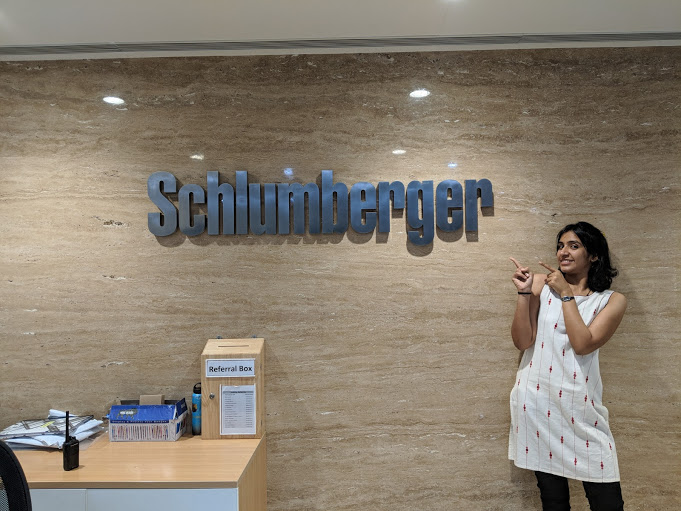

Body of IITR
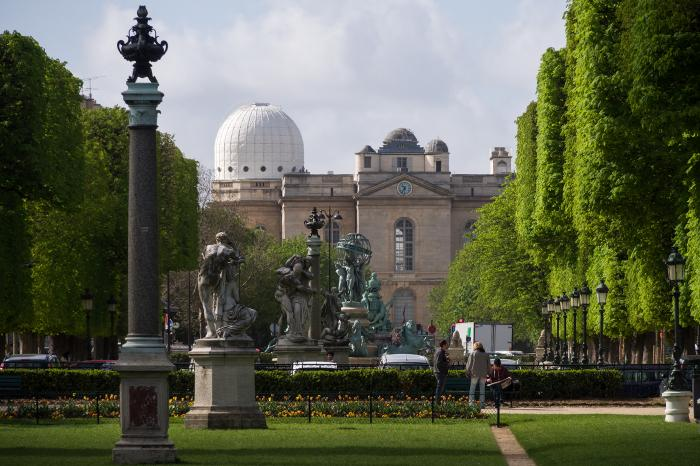
Quick context – I spent 10 weeks with the Cosmology group at the Paris Observatory, सौजन्य Charpak (pronounced IPA: [ʃaʁpak] or शाह्पाक) Research Scholarship, and, I was there, right at the centre of Champs Elysees, when France won the World Cup.
I will stick to the guidelines on this.
My research intern tale is mostly similar to what have already been told, except for the fact that I was (and still am) inclined to work in a niche area of theoretical physics which is Cosmology. Cosmology is a fairly recent field, gaining popularity only in the ‘60s , and seeing a burst of research only 28 years ago.. Further, it is also a predominantly post-graduate field of study. That is to say, you spend a year learning it, before you can actually get down to working on small, but independent projects. To give you a scale, there is no undergraduate elective course on Cosmology in any of the IITs, except IIT KGP (that too in 5th year, for Integrated MSc. Physics students), because they have Dr. Somnath Bhardwaj, who has worked extensively in the field. Over the past one and a half-year, working on small projects in Astronomy, Nuclear Astrophysics (in the campus, under Dr. Rajdeep Chatterjee), and now Cosmology, I have formed some opinions for the uninitiated in the field of scientific research, that I cannot help but share. I will state them matter of factly, as a prelude. First, you don’t need to be a gifted genius in order to get into pure science research. Excelling at the scientific method requires, what I call, “The Three Ps” – Practice, Perseverance, Patience. Second, a good academic background is a prerequisite. There is no substitute for that. Watching popular science videos on YouTube might be a good hobby, but do not mistake that for a proper training in the field. Third, and foremost, Physics is not Philosophy. There is nothing wrong in wondering about the grand truths and nature of the Universe, and contemplating about fancy propositions and spirituality on a late Saturday evening, but that is not what the modern day Science is all about. It is a quantitative field where everything has a definite, and (almost always) a rigorous mathematical basis. Basically, if you want to learn Quantum Mechanics, go, pick up J.J. Sakurai. If that is too much at once, fall back to more introductory texts, and so on.
I was focused on getting an internship in Europe, because recently, it has become a hub for Cosmological research with big money missions like Planck and Euclid based there. I started the groundwork and e-mailing in late July. Also, I wanted to get for myself one of the 4 flagship scholarships for financial support. Theoretical research groups are generally very small, and more often than not, part of a research institute (not a University). Thus, the scientists heading these groups are short on both – time and money, most of which is spent on supporting the PhDs and postdoctoral researchers. It is extremely difficult to shell out cash for an undergraduate with minuscule experience in the field; a hard truth I learnt later on. Yes, I had a decent background in Astronomy and Physics, but that does not make me good at Astrophysics. So, broadly speaking, I concentrated on getting an offer letter for DAAD-WISE in the Autumn Semester, and for Charpak in the Spring. In between, I applied to several University specific scholarships, and Undergraduate Research programs. For what the efforts in the Autumn were worth, I did get an offer letter from Germany, from Max Planck Institute for Astrophysics (which, for me, is the best out there). Hence, I was bordering all my hopes on DAAD, because I figured: I had a detailed research plan, good SOP, past IAS fellowship in Astronomy, and good recommendations. Why wouldn’t I get it? But as fate would have it, I did not get the scholarship. Therefore, something was definitely not as “good” as I had assumed it to be. Similar was the result for Globalink (where, again, I was already in contact with the professor), S.N. Bose scholarship, CERN, and at least 5 more program rejections. I believe that with every failure I learnt something. Few made me realize that I could have done better with the SOP, for a few others my CGPA at the time was not enough to survive the competition, and for some I was simply not knowledgeable enough in the field I was applying in. A lot of the times it was also just pure, dumb luck.
With the beginning of the Spring semester, I started scouting France, in order to get an offer letter for the Charpak Scholarship. My preliminary targets were LUTH (at Paris Observatory) and IAP (Institut d’Astrophysique de Paris). My inclination was more towards LUTH as it dealt with computational cosmology, my primary interest. This time, I was fortunate enough to get both, the offer letter and the scholarship. The wording of this article here does not reflect the state of mind I was in at the time, after innumerable failures over 8 months, despite seemingly having everything good on paper; unable to figure out where I was going wrong. That was absolutely nerve-wrecking. But again, that is not the point. The point is, I did not give up, and I had backup in case I had to face the worst-case scenario. (I kept applying in India too, and was accepted in the Summer Research Program of IIA, Bangalore, and had an offer from IUCAA, Pune).
My mailing advice would be: do not send generic emails. Invest a lot of time in exploring the field that you want to work in, and what the target professor’s/scientist’s work is all about. Specificity should be the aim, and it takes time to draft a professor-specific email. Also, first get a conversation going about the probable project, before bringing up stipend etc. in the discussion. Depending on what field you’re working in; where you’re working; and what you’ll be working on; a professor might agree to give you a stipend; or a travel stipend; or provide accommodation; or any combination of these.
Even though I missed out on an opportunity to be at MPA (which does not support undergraduates), I stayed in contact with my guide there, till the very end, till the time I got accepted for Charpak . He was kind enough to advise me about the field of work throughout this time, and invited me to work next year. This is what building good conversations can do.
It is only human to (subconsciously) try to project ourselves in the positive light, justify the mistakes, and overlook our own shortcomings by finding something to blame. Hence, whatever it is that you do, make sure that it is you, who has made that decision, and that you stick to it. In this way, however that decision turns out, it is you, who will be responsible for the consequences. That is to say, if it does not go as planned, the only way to move on would be to learn from the experience. I did not always know that I would end up doing Physical research. For a few months in 2016, when I was working with ZeroMQ at SDSLabs, I thought that Distributed Computing was ‘it’ for me. Couple of months later, I too made a decision; and at least for now, I am sticking to it.
Look, if you can summarize the evolution of the Universe in a couple of equations on one sheet of paper, I would say that’s pretty darn cool.
France has, historically, been a heavyweight in the fields of Science and Mathematics; at the very core of the scientific revolution in the 17th and 18th century. These were the times when the science arena had names like Descartes, Curie, Fourier, Laplace, Poisson, Coulomb, Fresnel, Poincaré, Mandelbrot, Cassini, and Becquerel, just to mention a few. I mention this to show that the research culture and support system in the country is very well nurtured, and is what draws people to carry out their research in France. The Charpak Scholarship is funded by the French Embassy in India, in association with Campus France (under French Ministry of External Affairs). The application process is similar to DAAD, except for the fact that there is no CGPA criteria. The selection relies heavily on your past experience, your ability to demonstrate its worth in the SOP, the academic background (maybe you had a slightly low CGPA, but you performed brilliantly in the courses that matter), and the recommendation. However, from what I have read, and heard from fellow Charpak interns, the unofficial cut-off generally fluctuates around 8.5. The selection process itself is extremely competitive, like any other program. This year only 13 students were selected from all over India.
The perks of the scholarship include a visa fee waiver, medical insurance, assistance to find a cheap accommodation (extremely necessary if you’re in Paris, the second costliest city in the world), and of course, a stipend (of EUR 795). The stipend was revised this year, effectuating a raise of more than 2.5 times. Further, given that France is one of the most productive economies in the world, it has workforce friendly labor laws. It is illegal to not pay any intern working for 8 weeks or more. Hence, apart from the scholarship stipend, anyone interning in France also receives a salary from the respective institute of about EUR 560. And like most countries in the EU, students receive benefits like food and public transport subsidies. All of this was enough to cover all my living and travel expenses, and leave quite a bit for leisure.
Observatoire de Paris happens to be one of the oldest astronomical research institute (older than the Greenwich Observatory). Although, it has retained the historical name of ‘Observatory’, not much observational work goes on there. Stargazing is a little troublesome when you’re literally in the ‘City of Lights’. The modern day institute is at the centre of the astrophysics scene in France, and is a collaborator in all major multinational Astronomy projects. It has several labs covering fields like Space Physics, Planetary Physics, Cosmology, Plasma physics, Galactic, Stellar and ISM physics, Astronomical instrumentation etc. Further, it is also a founding member of the PSL Research University, which comprises of the top French institutes in the fields of Arts, Engineering, and Science.
I had been wanting to explore Cosmology for a long time, and this internship gave me the chance. As I mentioned, I was working in a lab called LUTH (Laboratoire Univers et Theories), under the guidance of Dr. Pier Stefano Corasaniti. Cosmology has a fairly simple sounding objective: to study the evolution of the Universe. However, in practice, it is a very diverse field. Major portion of the ongoing research is focused on studying several competing models for Dark Energy (called Quintessence models), and trying to incorporate them in the standard model of cosmology, called the Lambda-CDM model. In order to test any physical theory, one needs to apply it to the observables. The two major observables used by Cosmologists, which lead to two major pathways of study are: (1) mapping the distribution and properties of galaxies across the sky, which leads to the field of studying cosmic structure formation, and (2) analysing the Cosmic Microwave Background (CMB) radiation which leads to the field of CMB Physics. For 10 weeks, I studied the latter. One of the reasons that attract me towards this field is that it demands a good command over several subjects. You’ll need to know some Classical Physics, Statistical Physics, Quantum Mechanics, and General Relativity, in order to understand how the primordial plasma gave rise to the large scale structure we observe today.
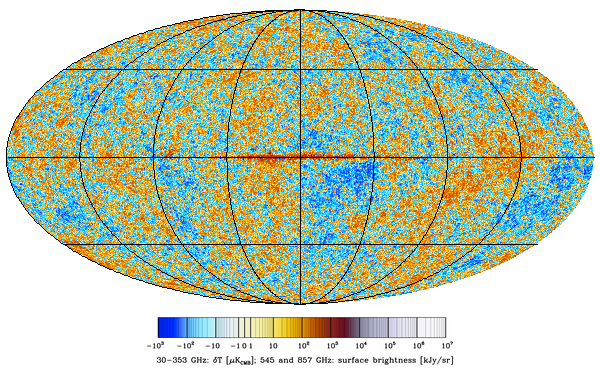
For almost a month I learnt the basics of Cosmology, as this was my first introduction to the field. Then I ventured into more advanced topics like Cosmological Perturbation Theory, that are required to work on the problem I was given. My work started off by completing simple tasks like doing consistency checks on theoretical formulas that predict the location of the peaks of the Angular CMB Power Spectrum. Then it slowly got more involved. I had to implement a general Markov Chain Monte Carlo (MCMC) engine that would estimate the constraints on the cosmological parameters for the LCDM model using the locations of the above mentioned peaks (obtained from Planck satellite data); also incorporating priors for these parameters obtained from Big Bang Nucleosynthesis (BBN) estimates and Baryon Acoustic Oscillations (BAO) observations. Then, I had to use the obtained results to quantify what is called, ‘The Early ISW effect’, an important effect that occurred about 380,000 years after the Big Bang, when the photons decoupled from the matter. Yet another part of my project involved studying about what is called the Distance-Duality violation, and how that is implemented numerically, through the perturbation theory. These problems were pedagogical in nature, and small enough to be completed in about 6 weeks (after 4 weeks of study). Thus, I got a good flavor of the ongoing research in the field.
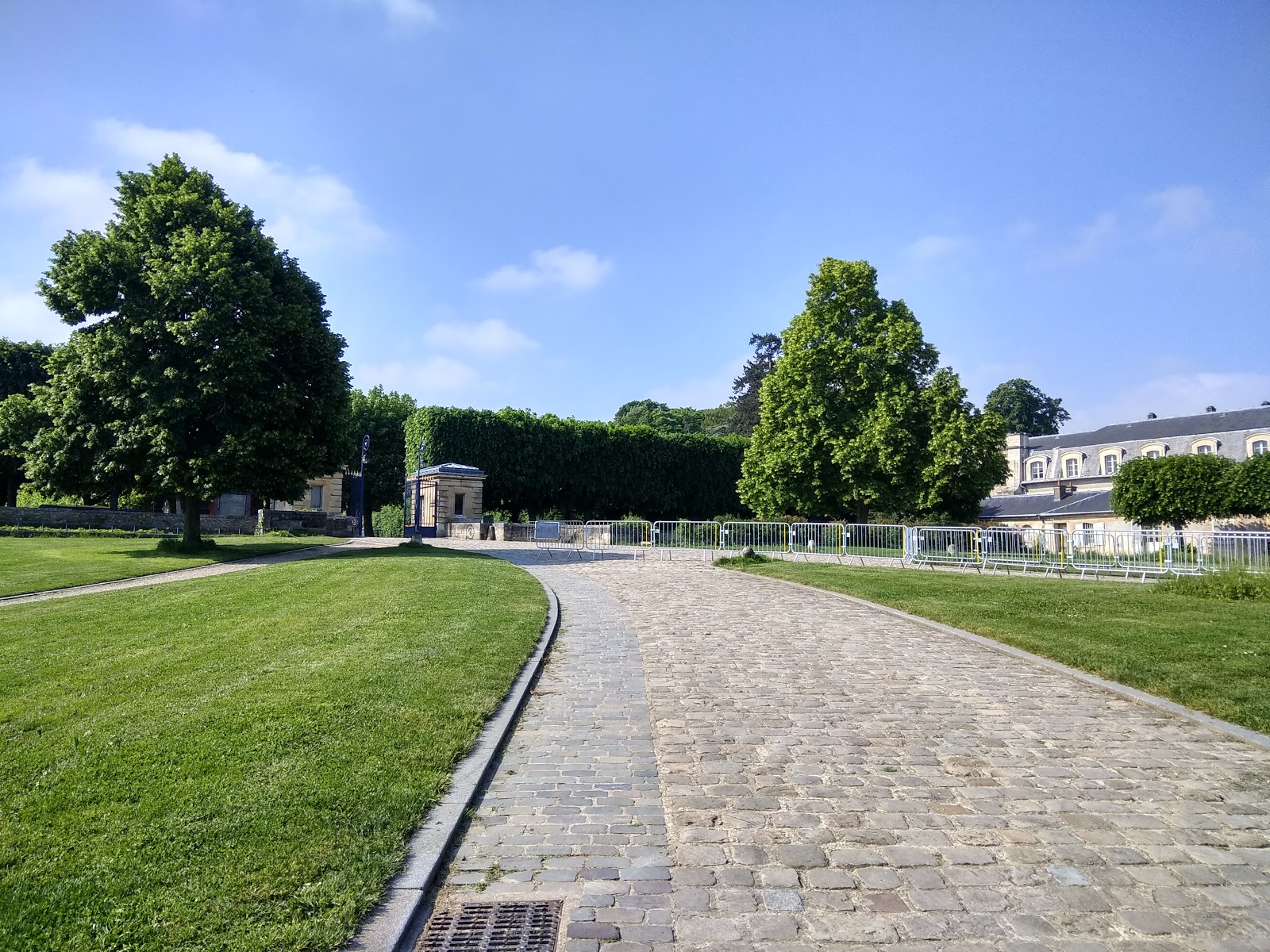
The work environment in the lab was very accommodating. The offices were open for 24 hours during the working days, and there were no fixed working hours. Researchers could work as they found suitable. My team was quite multicultural, having a French-Colombian, a French-Italian, Italian, Portuguese, and Spanish researchers. This made the lunch conversations rather interesting. Not only this, but the physical working environment was serene too. Paris Observatory, being as old as it is, owns a large estate in the suburbs. The campus in Meudon, where the offices are situated, is located in a forested park known as Parc de l’Observatoire – part of a large 340 acre forested, hilly land maintained by the Observatory. The campus even had a lake that often made for an ideal post-lunch fish-feeding relaxation break. One other thing that stoked me was the Institute’s library. It is definitely one of the most beautiful astronomy-astrophysics libraries in the world, having a 350 year old heritage. The collection is stupendous, more comprehensive than I had thought, and fully dedicated to research. Their archives have preserved the original works of, and correspondence between French luminaries of the time, including famous astronomers like Messier, Cassini, and Delaunay.
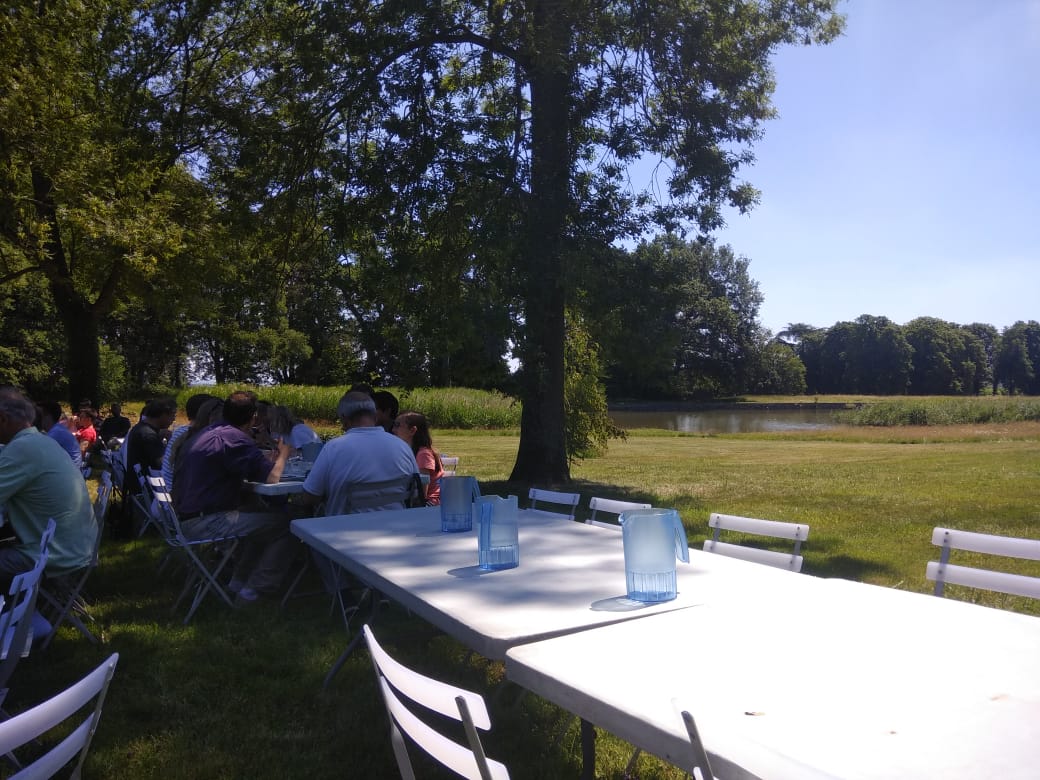
Paris is a beautiful city, and my limited vocabulary cannot do justice to its grandeur. I used to live in a suburb of Paris called Meudon (also where the Observatory campus is), right near the 15th arrondissement, with the bustling metropolis only 10 minutes away. Paris is perhaps the most culturally significant city in the western Europe. No single place has had as much impact in shaping modern culture, and in fostering art and science, as Paris. From Voltaire and Rousseau, to Sartre and Camus; and from Renoir and Monet, to Matisse and Picasso; the city houses treasures of generations of philosophers and artists who spent their lives there, creating masterpieces, and shaping the legacy of the city as we know it. I have a thing for art, not just paintings, but art. It is not quantitative. It relies heavily on your experiences, is fueled by imagination, driven by emotions, and perfected by practice. Nothing expresses the ‘human element’ better. Going from knowing hardly anything about Western Art History to gazing at Vermeer and Rembrandt is a big deal, at least for my tiny brain. Learning some Art Appreciation, History, and Evolution, has been a very satisfactory addition to my knowledge base. I also picked up a thing or two about Champagne manufacturing whilst touring the cellars of the House of Moet & Chandon in Champagne. One other fine Sunday morning, I treated myself to a concerto by the Paris Opera Orchestra in the Palais Garnier, arguably the most beautiful opera house in the world. Every wall of the gigantic facade, every flight of stairs, every corridor, a treat for the eyes. I was often accompanied by two of my friends from Roorkee, Yash and Mihir, who were also on an intern there. And for the latter part of my intern, I was also joined by WatchOut’s own Shirsendu Halder, who is on a Research Assistantship at INRIA.
When I think about “What’s to love about the place”, the one fact I cannot comprehend is how, for decades, the city has managed to be such a perfect blend of glamour, heritage, and progressiveness. This is easily discernible in the architecture of the city. The city core is deeply reminiscent of the middle ages, and is comprised mostly of Renaissance era gothic architecture. Every other building, even if it’s a two floor McDonald’s today, is embellished with a variety of Christian sculptures, rich in details. When going around the city it is also fairly easy to spot Baroque – monumental exhibition palaces (Grand Palais), museums, hotels, and other buildings that are now used for regular city purposes. In the more commercial places that developed in the mid 20th century, around the river, there is the art-deco style on display, prime example of which is The Grand Rex. As one moves farther from the Seine, modern parisian housings (where even the windows have wooden facades) become apparent. Interestingly, the authorities there maintain a count of two places that are essential requirements of a Parisian’s life – Boulangeries (bakeries) and Cafes. They are in such abundance that your favourite baguette and cocktail is never more than a couple of hundred meters away. So, if you ever happen to visit Paris, better hike your ‘Food and Drinks’ budget; because ‘chic’ doesn’t even begin to describe it.
“You can never be done with Paris”, were the words of a good friend (who probably said that while sipping Diet Coke at Times Square). And true he was. On weekday evenings, when the work has drained you, just catch a metro to St. Michel. Once there, buy a bottle a wine from Monoprix and ham sandwich from a local shop; walk down the steps to the banks of Seine, find a place to sit, and let the City do its job. As the sun sets behind the Eiffel, giving Notre Dame a golden red hue, you will start hearing a street performer somewhere, violin, or probably an accordion. Around this time the iconic bridges, Pont Neuf and Pont des Arts will light up, and so will the entire St. Michel; bright orange at first, but slowly dwindling. It is then that you pull the cork.
The premise of the following day will be exactly what is was today, but you will feel rejuvenated, and more importantly, you will be happy. I was.
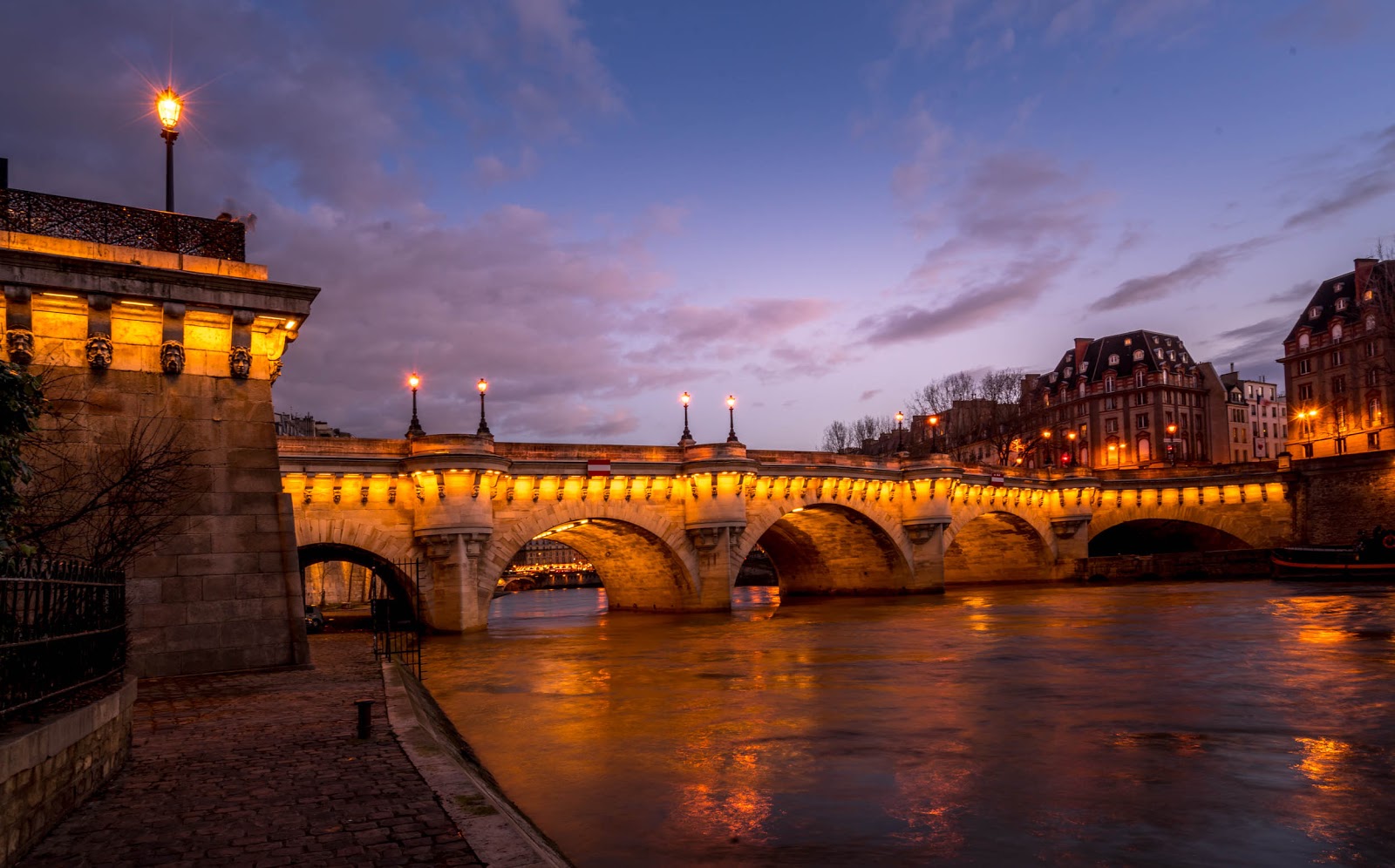
Describing the Bastille Day, or the World Cup moments in this article itself might require the use of a few fleeting expletives, which I think is against the guidelines. Besides, I was given a word limit of 700-infinity, which I have already exceeded. I will be more than happy to talk all about it, in person.
My experience with the French (and Parisians) can be summed up nicely by the following pieces conversation between Dave Chappelle and Jerry Seinfeld (on the latter’s show Comedians In Cars Getting Coffee), who also happen to be some of my favorite comedians.
Jerry: You know the French. They don’t care about anybody else.
Dave (laughing): Right!
Dave: Notoriously selfish people, the French.
Jerry (referring to the ‘73 Citroen Maserati SM): Yes, right. But sometimes that leads to interesting work.
(Later in a Coffee bar)
Dave: Paris, I don’t know if I can live there.
Jerry: Why?
Dave: Something about the culture of the city makes me feel foreign.
Jerry: Well, you are.
Jerry: They are not welcoming you.
Dave: Yeah, there’s no welcome mat.
Jerry: That doesn’t bother me.
Jerry: If I had what they have, I’d be the same way.
Jerry: If I could bake bread like that, have women like that, I would look down on everybody. Their condescension to me, is earned.
Dave (laughing): Fair enough!
There were times when Dave would be too relatable, but as always, Jerry has a point!